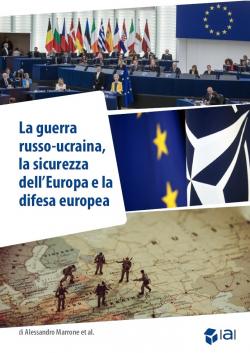The Russia-Ukraine War, Security in Europe and European Defence
The ongoing conflict since 24 February 2022 has shown strengths and weaknesses of the two warring sides, and in light of these factors, several scenarios are currently possible including the liberation of Ukrainian territories occupied by Moscow. The conflict also had a significant spatial dimension, and led to the disruption of important cooperation in space between Russia and the West. The war also carries a dual atomic risk: that of escalation with Russian use of tactical nuclear weapons, and that of an accident at the Zaporizhzhia power plant. The conflict brought a number of structural changes to the European strategic framework, primarily the entry of Finland and Sweden into NATO that strengthen the Atlantic Alliance and shift its centre of gravity to the northeast. The Strategic Concept approved in June by the Madrid summit enshrines a NATO focused primarily on collective defence against the Russian threat. At the same time, the European Political Community took its first steps with the Prague summit, attended by 44 European countries including 27 EU members. Within the Union, however, initiatives for defence cooperation and integration could be disadvantaged by a sudden and uncoordinated increase in national military investment for the benefit of non-EU suppliers.
-
Details
Rome, IAI, November 2022, 41 p. -
ISBN/ISSN/DOI:
978-88-9368-274-9 (it); 978-88-9368-275-6 (en)
1. Ukraine’s Counteroffensive and Scenarios for the War, by Alessandro Marrone
2. The Space Front in the War in Ukraine, by Giancarlo La Rocca
3. The Dual Nuclear Threat Facing Ukraine, by Paola Tessari
4. Russia in the Mediterranean: A Threat?, by Michelangelo Freyrie
5. Sweden and Finland in NATO: A Step Forward in the Baltic, but Not All That Glitters Is Gold, by Karolina Muti
6. Where the NATO Compass Points, by Elio Calcagno
7. Three Ways to Achieve a European Political Community, by Nicoletta Pirozzi
8. The Risks to European Defence of Non-coordination, by Michele Nones
9. Where Italy Invests on Defence, by Ottavia Credi
10. Conclusions – Where Is European Security Going?, by Alessandro Marrone
Acronyms



